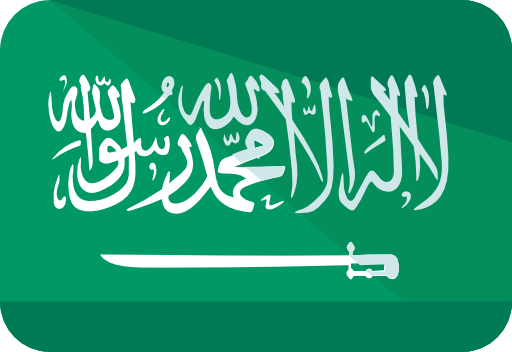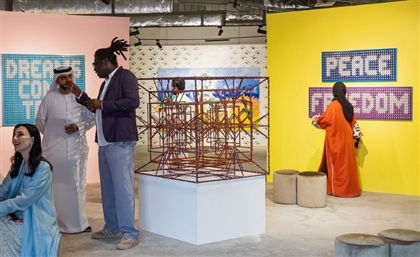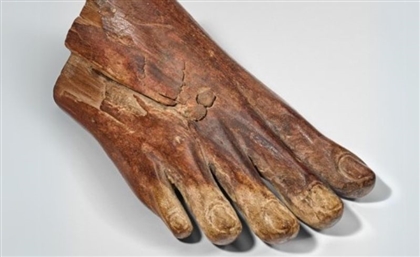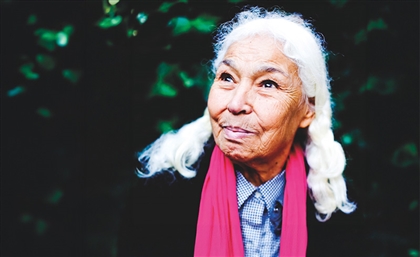How Christie’s is Turning Saudi into the Art World’s New Power Player
Managing Director of Christie’s Saudi Nour Kelani shares who’s buying, what’s trending, and why Saudi is one to watch.
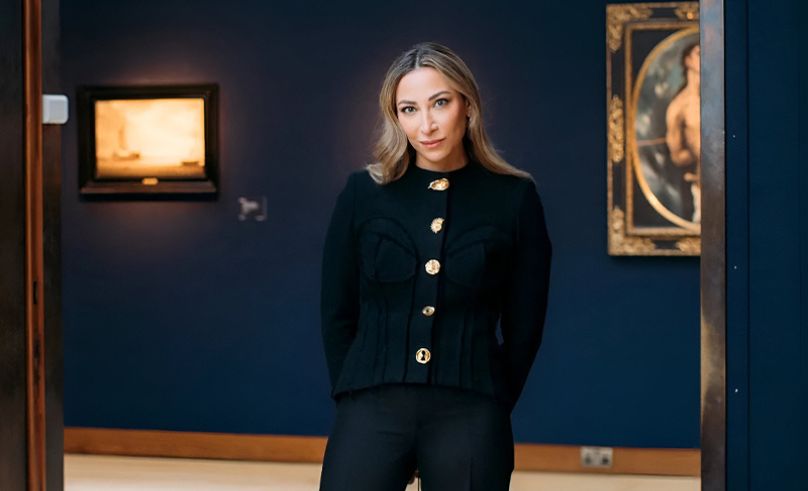
Few names carry as much weight in the auction world as Christie’s. Known for moving billions annually through record-breaking saleroom sales, the house’s global reach spans cultural hubs from London to Dubai—and now, Riyadh.
Saudi Arabia’s growing appetite for art has opened a new frontier for Christie’s, and at the centre of this expansion is Nour Kelani, the company’s Managing Director for the Kingdom. Beyond her credentials—including France’s prestigious Chevalier de l’Ordre des Arts et des Lettres—Kelani is fast becoming one of the region’s most influential connectors in a market defined by both rapid growth and deep-rooted traditions.
Speaking to SceneNowSaudi, Kelani unpacks Christie’s ambitions in Saudi Arabia and offers a rare glimpse into the dynamics shaping the Kingdom’s art scene. From the new generation of collectors driving demand to Christies’ highly anticipated Saudi auction this May, Kelani paints a picture of a country that has quickly become impossible for the global art world to ignore…
-4d48892b-b949-4f32-a7e0-fd774098e2e6.jpg) What was the push behind launching in Saudi Arabia now?
What was the push behind launching in Saudi Arabia now?
Saudi Arabia offers exciting new opportunities in the secondary arts and luxury markets. Christie’s saw regional growth across the arts in recent years. Between 2015 and 2024, we saw a 173% increase in Saudi bidders and buyers. From 2019 to 2024 alone, that figure rose by 150%. With Vision 2030 underway, leadership decided the time was right to secure a commercial license and build a team in Saudi Arabia.
Will Christie’s Saudi focus primarily on Saudi art, or are there plans to expand to the wider MENA region?
We operate with a global outlook and local expertise. While we prioritise representing Saudi artists and art histories, we also support clients interested in works from across the world. Our growing Saudi team will include locally recruited talent who travel extensively and represent Christie’s around the region.
We’ve had a Middle East hub in Dubai since 2005, now celebrating its 20th anniversary. Our specialists travel throughout the region—from visiting artists’ studios to working with collections and institutions. That won’t change.
What can collectors and art enthusiasts expect in the coming months?
We’re focused on forming collaborations within the region’s arts ecosystem. Christie’s is a programming partner of the Islamic Arts Biennale, which runs until May 25th. Christie’s will host a workshop on collecting art this May 12th at the Islamic Arts Biennale in Jeddah. There will be an insider tour called ‘Behind the Scenes at an Auction House’, which follows the journey of a work of Islamic art from consignment to auction.
-12d3aca6-21cc-4320-9536-814745b848a4.jpg) Are there any standout sales on the horizon that you're particularly excited about?
Are there any standout sales on the horizon that you're particularly excited about?
Our bi-annual London sale, ‘Art of the Islamic and Indian Worlds including Rugs and Carpets’, continues to be a major draw. It spans nine centuries and includes carpets, ceramics, manuscripts, textiles, metalwork, and more. These sales attract interest from Middle Eastern collectors and institutions, offering global exposure to their acquisitions.
Could you share more on the current online sale of Modern and Contemporary Middle Eastern Art Online?
Our annual online sale is live for bidding until May 8th. It features 69 works, including paintings, photographs, sculptures, and works on paper. We’re excited to debut ‘Saudi Now!’, a curated selection of 12 pieces by Saudi artists that chart the country’s evolving cultural landscape.
What types of art are attracting the most interest from Saudi collectors, and how is Saudi and Arab art being priced in the global market?
Saudi collectors are drawn to a range of categories, including old masters, contemporary Arab art, fine jewellery, and timepieces. Over the last three years, we’ve seen increased demand for artists like Ahmed Mater, Manal AlDowayan, and Dana Awartani.
Saudi and Arab art have long had a regional market, but with growing visibility, their value and demand are rising.
Have you noticed any unique trends emerging in the Saudi art and collectibles market?
Millennial collectors in the Kingdom are showing growing interest in Modern and Contemporary art—from the 20th and 21st centuries—not limited to Saudi artists. I’ve noticed that they’re drawn to contemporary and conceptual works, works that are more research based. They’re after what inspired the artist, good conversation starter pieces. They’re focused on Middle Eastern art that resonates with them.
-044f24cb-015b-4b2e-baa6-0900edc140b1.jpg) How does the buying behavior in Saudi compare to other regional markets?
How does the buying behavior in Saudi compare to other regional markets?
One key difference is the youth of our clientele. 30% of Christie’s Saudi buyers are millennials or Gen Z. Their preferences are already reshaping trends, especially in categories like luxury watches and fine jewelry in the secondary market.
What advice do you have for people who are interested in starting their art collection?
I advise new clients importantly to buy what they love and to be driven by their passion. Visit studios in the JAX District, attend galleries, and keep an eye on auctions for emerging talent. Great works are still accessible now—but as demand grows, so will their prices.
On a personal level, what drew you personally to contemporary Saudi?
I collect contemporary Saudi art. I was an early supporter of Ahmed Mater and own one of his ‘Magnetism’ series pieces, so I have a deep connection to the contemporary Saudi scene and a strong interest in emerging voices.
-3ccc210c-3b63-4235-a195-18213868f30f.jpg) What was the inspiration behind joining Riyadh’s debut Art Week?
What was the inspiration behind joining Riyadh’s debut Art Week?
Riyadh Art Week made art more accessible through a citywide showcase featuring over 45 galleries, institutions, and collections. Christie’s participated with a workshop led by one of our leading lecturers and joined a panel discussion featuring our President, Anthea Peers.
We see events like these as vital to building cultural exchange and supporting the arts locally. They also allow us to share our global expertise in art history, curation, and collecting.
In five years, what do you personally hope Christie’s Saudi will have achieved?
I am personally looking forward to seeing the continued rise in awareness and visibility of Saudi art and artists on an international platform. There is such incredibly rich artistic talent in the Kingdom. With the next generation of artists emerging, I am sure it will continue to flourish with the wider support of the art market and grow considerably over the next five years.
Growing our team locally is a top priority. I also foresee an increase in international engagement in Saudi art and artists as international awareness grows in part due to the ongoing digital accessibility and also from touring loan works. It really is a very exciting time to be living in the Kingdom and to play a role in the remarkable changes taking place.
- Previous Article PepsiCo Inaugurates New Regional Headquarters in Riyadh
- Next Article Screams, Sweat & Sriracha: Inside Egypt’s Biggest F&B Showdown


